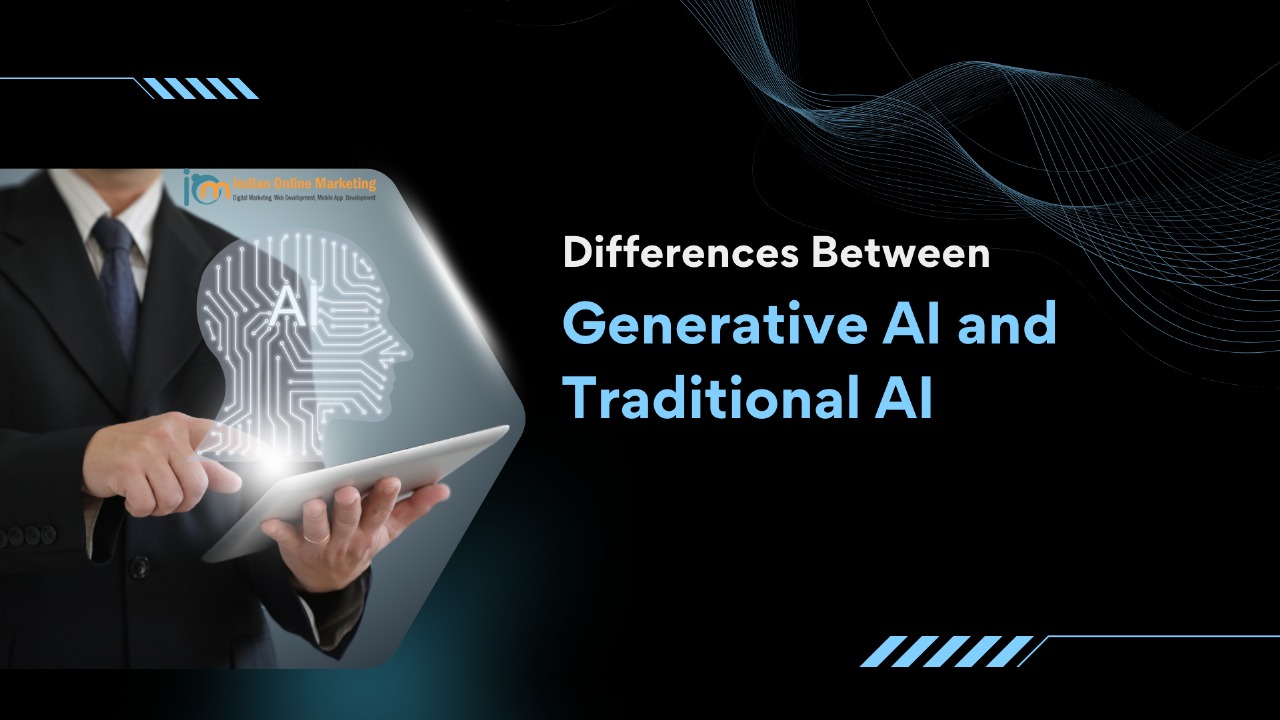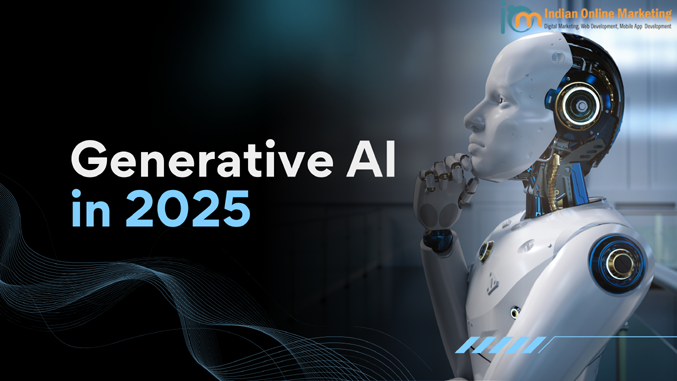1. Introduction: The Emergence of Generative AI in Marketing
Generative AI in 2025 has emerged as a vital tool for marketers, revolutionizing the way brands produce, distribute, and optimize content. In contrast to conventional content creation, which tends to be based on guesswork and manual effort, generative AI allows companies to create high-quality, personalized content at a scale never seen before.
The swift development of AI models—driven by breakthroughs in natural language processing (NLP), deep learning, and large language models (LLMs)—has enabled brands to connect with customers through hyper-relevant messages at every touchpoint. From dynamic email campaigns to AI-written video scripts, generative AI is transforming marketing strategies, enabling businesses to remain competitive in an increasingly digital-first world.
In this blog, we'll explore:
- How generative AI works
- Why personalization is critical in 2025
- The best tools and use cases for leveraging AI-driven content at scale
2. What is Generative AI?
Generative AI refers to artificial intelligence solutions that can generate text, images, audio, video, and even code from input prompts. In contrast to conventional AI, which is built for prediction or classification (e.g., spam filters, recommendation systems), generative AI creates new content.

Differences Between Generative AI and Traditional AI
|
Aspect |
Traditional AI |
Generative AI |
|
Purpose |
Analyzes information, predicts |
Generates new content |
|
Output |
Structured information |
Original text, images, videos |
|
Training Data |
Needs labeled datasets |
Trains on massive unstructured data |
|
Use Cases |
Fraud detection, recommendations |
Content creation, design, storytelling |
Generative AI models such as GPT-5, Claude 3, and Gemini 2.0 have reached incredibly high levels of sophistication, enabling marketers to create human-sounding content in mere seconds. These models are trained on huge datasets, allowing them to:
- Replicate brand voice
- Adapt to audience preferences
- Optimize content for engagement
3. Why Personalization Matters More Than Ever
By 2025, consumers expect brands to understand their preferences and deliver tailored experiences. Generic, one-size-fits-all content is no longer effective—research indicates that personalized marketing:
- Generates 20% more sales
- Increases customer retention by 30%
Key Drivers of Personalization Demand
- Data Overload: Consumers are flooded with content daily—only personalized messages cut through the clutter
- AI-Powered Expectations: Customers now expect Netflix-level recommendations in all interactions (Spotify's AI playlists, Amazon's product suggestions)
- Hyper-Targeted Advertising: Platforms like Meta and Google use AI to deliver ultra-contextual ads
- Competitive Edge: Companies using AI-powered personalization outperform competitors by 40% in engagement metrics
Generative AI helps marketers meet these expectations by automating personalized content generation while maintaining brand consistency.
4. How Generative AI Powers Personalized Content at Scale
Generative AI enables brands to create customized content efficiently across multiple channels:
A. Dynamic Content Generation
AI tools analyze user data (browsing history, purchases, demographics) to generate:
- Unique product descriptions (e.g., Shopify auto-generates for each visitor)
- Optimized email subject lines (tests multiple variants for maximum opens)
- Social media posts with trending hashtags (e.g., Hootsuite AI suggestions)
B. Multilingual & Localized Content
- Translates and adapts messaging for different regions
- Preserves cultural nuances
- Reduces localization costs by 50%
C. A/B Testing at Scale
- Generates hundreds of ad copies, headlines, and CTAs
- Optimizes in real-time based on performance
D. Automated Workflows
- Integrates with CRM/marketing automation tools (HubSpot, Salesforce)
- Triggers personalized follow-ups based on user behavior
5. Top Generative AI Tools and Platforms in 2025
|
Tool |
Best For |
Key Features |
|
ChatGPT-5 (OpenAI) |
Long-form content, brainstorming |
Improved reasoning, fewer hallucinations |
|
Jasper AI |
Marketing copy, ads |
Brand voice customization, SEO optimization |
|
copy.ai |
Social media, emails |
50+ templates, team collaboration |
|
Canva Magic Write |
Visual + text content |
AI-generated designs with text suggestions |
|
Synthesia |
AI video creation |
Custom avatars, multilingual voiceovers |
|
Claude 3 (Anthropic) |
Ethical AI content |
Less biased, enterprise-friendly |
|
Midjourney v6 |
AI-generated images |
Photorealistic visuals, brand-aligned |
These tools help marketers:
- Increase content output 10x
- Reduce production time by 70%
6. Use Cases Across Marketing Channels
Generative AI is transforming every aspect of digital marketing:
A. Social Media Content
- AI-generated posts (Hootsuite AI suggests captions)
- Automated chatbot responses
- Custom graphics (Midjourney, DALL-E 4)
B. Email Campaigns
- Personalized subject lines ("John, your exclusive deal inside!")
- Dynamic product recommendations
C. Video Scripts & Ads
- Instant video scripts (Synthesia)
- Blog-to-video conversion (Pictory for TikTok/Instagram)
D. Advertising & PPC
- High-converting ad copies (Google Ads AI)
- Multiple creative variants (Meta's AI Sandbox)
E. Website Personalization
- AI chatbots (Drift, Intercom)
- Dynamic landing pages (Unbounce AI)
7. Introduction: The AI Revolution in Content Marketing
By 2025, generative AI has become fundamental to marketing strategies globally. Companies using AI-powered content creation experience:
- 50% faster production cycles
- 30% higher engagement
- 20% lower costs
However, marketers must balance:
- Ethical considerations
- Brand authenticity
- Emerging trends
8. Impact on Efficiency and ROI
Generative AI delivers smarter, data-driven content that converts:
A. Faster Content Production
- Tools like Jasper AI and ChatGPT-5 create content in minutes
- Case Study: Travel brand reduced blog production time by 70%
B. Cost Savings
- Less reliance on freelancers for repetitive tasks
- Automated A/B testing reduces ad spend waste
C. Higher Conversions
- Hyper-relevant content increases email open rates by 25%+
- AI product recommendations boost e-commerce sales 15-30%
Key ROI Improvements:
✅ 50% faster content creation
✅ 30% lower production costs
✅ 20%+ higher engagement
9. Challenges and Ethical Considerations
A. Over-Automation Risks
- Generic, robotic content
- Solution: Human editing for brand voice
B. Content Sameness
- Repetitive messaging across brands
- Solution: Custom prompts and brand-specific training
C. Ethical Concerns
- Potential plagiarism
- AI bias in outputs
- Solution: AI detectors (Originality.ai) + human review
D. Brand Voice Dilution
- AI struggles with unique brand tones
- Fix: Train AI on existing brand content
10. Best Practices for Marketers
✔ AI as Co-Pilot: Generate ideas/drafts with AI, human edit
✔ Brand Training: Feed AI past marketing materials
✔ Quality Focus: Avoid AI content spam
✔ Transparency: Disclose AI use when appropriate
✔ Continuous Testing: Monitor performance and refine
11. Future Outlook (2026-2027)


Comments
aJYRmMpc xIiDRHGr Azec Gehoc uAvic ndgZd
hNR MfDj Yecd VKFyQDvQ KrCcShh wkIEL